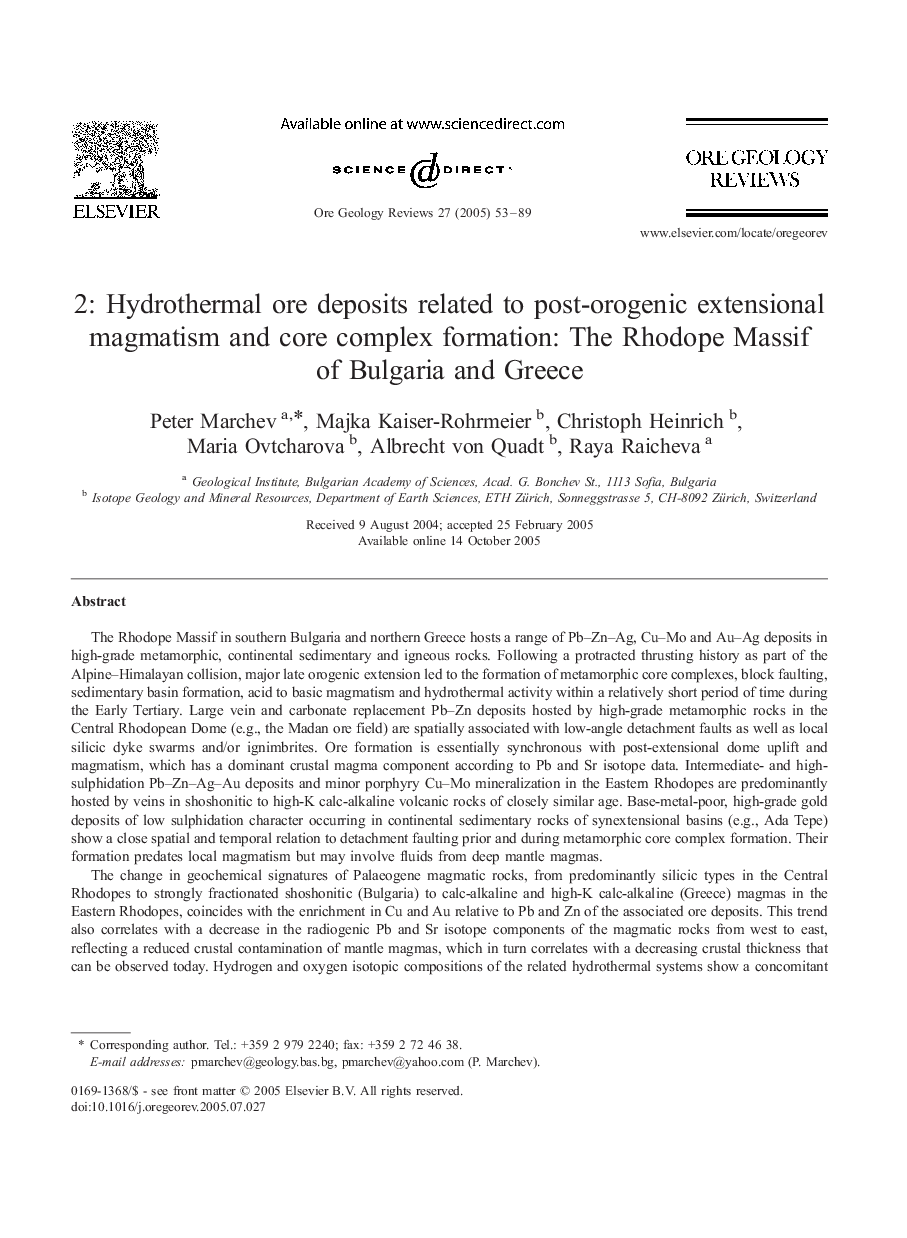| Article ID | Journal | Published Year | Pages | File Type |
|---|---|---|---|---|
| 9528826 | Ore Geology Reviews | 2005 | 37 Pages |
Abstract
The change in geochemical signatures of Palaeogene magmatic rocks, from predominantly silicic types in the Central Rhodopes to strongly fractionated shoshonitic (Bulgaria) to calc-alkaline and high-K calc-alkaline (Greece) magmas in the Eastern Rhodopes, coincides with the enrichment in Cu and Au relative to Pb and Zn of the associated ore deposits. This trend also correlates with a decrease in the radiogenic Pb and Sr isotope components of the magmatic rocks from west to east, reflecting a reduced crustal contamination of mantle magmas, which in turn correlates with a decreasing crustal thickness that can be observed today. Hydrogen and oxygen isotopic compositions of the related hydrothermal systems show a concomitant increase of magmatic relative to meteoric fluids, from the Pb-Zn-Ag deposits of the Central Rhodopes to the magmatic rock-hosted polymetallic gold deposits of the Eastern Rhodopes.
Keywords
Related Topics
Physical Sciences and Engineering
Earth and Planetary Sciences
Economic Geology
Authors
Peter Marchev, Majka Kaiser-Rohrmeier, Christoph Heinrich, Maria Ovtcharova, Albrecht von Quadt, Raya Raicheva,
